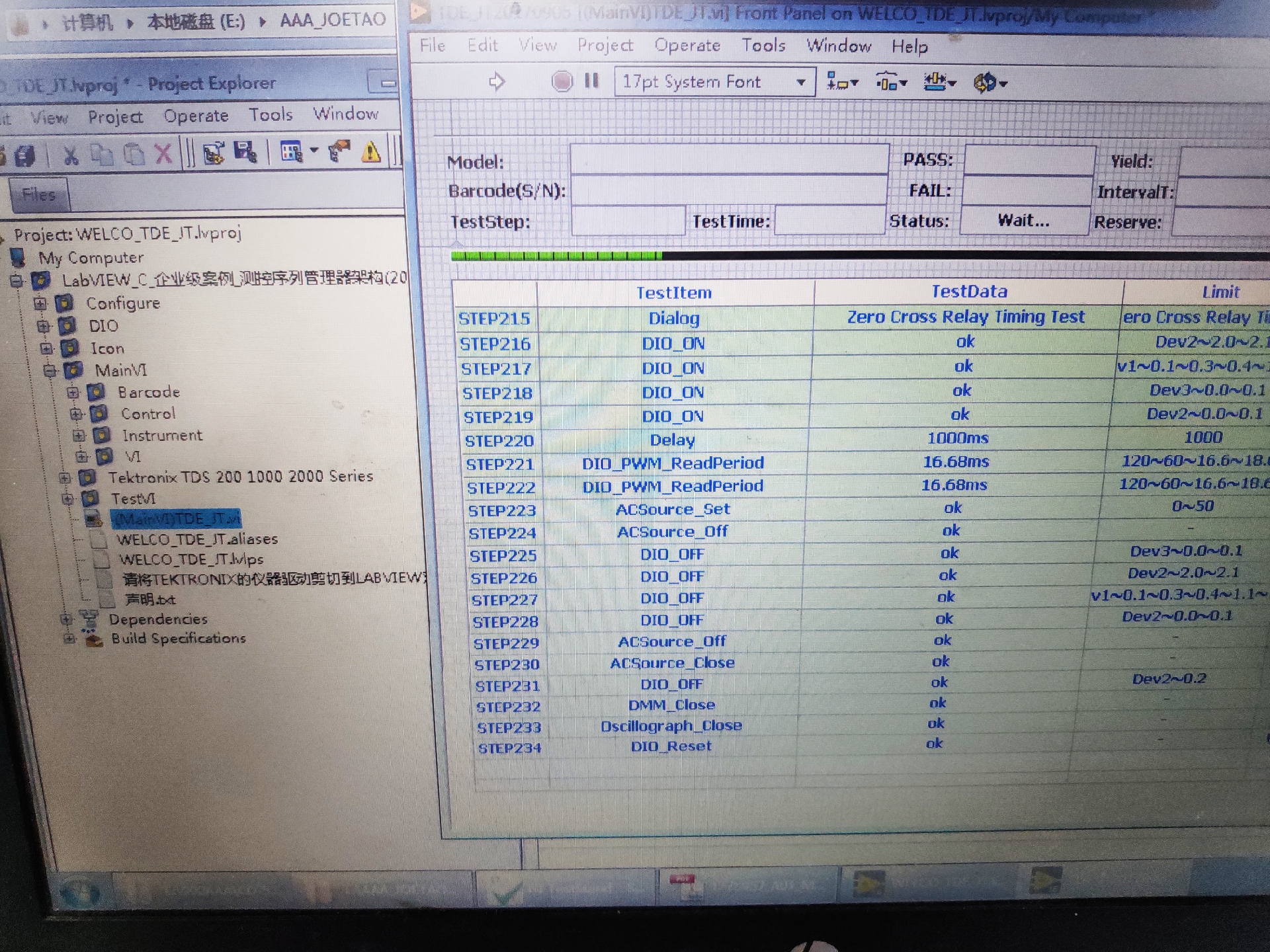LabVIEW测试程序源代码企业级序列管理器架构源代码
,源代码Labview2015版
ID:411890654589769175
JATs


标题:基于LabVIEW的企业级序列管理器架构源代码分析
摘要:
本文以LabVIEW2015版的企业级序列管理器架构源代码为研究对象,对其进行深入分析和解读。首先,对LabVIEW测试程序的概念进行阐述,并介绍了源代码的相关背景和意义。接着,着重从架构设计、模块功能和代码实现等方面进行详细分析,探讨了该源代码的设计理念和实现方式。最后,对其在实际应用中的优势和不足进行了评估,并提出了未来发展的展望。
关键词:LabVIEW,测试程序,企业级序列管理器,架构设计,源代码
-
引言
LabVIEW作为一种图形化编程语言,广泛应用于仪器仪表领域。本文研究的企业级序列管理器是在LabVIEW平台上开发的测试程序,具有高度的可复用性和扩展性。该源代码的分析可以帮助开发者深入了解LabVIEW测试程序的设计思想和实践经验,进一步提升其开发水平和技术能力。 -
LabVIEW测试程序概述
2.1 概念介绍
LabVIEW测试程序是一种基于图形化编程的测试方法,通过组合不同的功能模块和仪器驱动,完成对被测对象的测试和数据处理。企业级序列管理器是一种高级测试框架,用于管理和执行复杂的测试序列,实现对多个测试步骤的自动化控制和数据采集。
2.2 背景与意义
企业级序列管理器架构源代码是为了满足日益复杂的测试需求而开发的,旨在提高测试效率、降低测试成本和提升测试质量。通过对源代码的深入分析,可以了解其在实际项目中的应用价值和技术特点。
- 架构设计
3.1 模块划分
企业级序列管理器架构源代码采用了模块化的设计思想,在实现过程中将不同的功能模块进行了划分和组合。本文对源代码中的各模块进行了详细介绍,包括测试步骤管理模块、数据采集模块、结果分析模块等。
3.2 数据流控制
通过分析源代码,可以看到数据流在整个测试程序中起到了至关重要的作用。数据流控制的设计使得测试程序能够根据实际情况进行自适应调整,实现对测试过程的灵活控制。
- 模块功能与代码实现
4.1 测试步骤管理模块
测试步骤管理模块是企业级序列管理器的核心,负责管理和执行测试序列中的各个测试步骤。本文详细介绍了该模块的功能设计和代码实现,包括测试步骤的配置、执行和结果处理等。
4.2 数据采集模块
数据采集模块是测试程序中的重要环节,用于采集被测对象的数据并进行实时监控和记录。本文对该模块进行了功能分析和代码实现的解读,包括数据采集方式、数据处理和存储等。
4.3 结果分析模块
结果分析模块是测试程序中对测试数据进行分析和判定的核心部分。本文对该模块进行了详细的功能介绍和代码分析,包括结果分析的算法、判定规则和报告生成等。
- 优势与不足评估
5.1 优势
通过对企业级序列管理器架构源代码的分析,可以看出其具有如下优势:高度可扩展的设计架构、图形化编程的简便性、灵活的数据流控制等。这些优势可以提高测试效率和质量,降低测试成本。
5.2 不足
企业级序列管理器架构源代码在实际应用中也存在一些不足之处,例如对一些特殊功能的支持不够完善、对大数据量的处理能力有限等。针对这些不足,本文提出了一些改进的思路和建议。
-
未来发展展望
基于对企业级序列管理器架构源代码的分析,本文对其未来的发展方向进行了展望。从技术层面上,可以进一步完善功能模块、增强算法能力并提升系统的性能。从应用层面上,可以拓展适用场景和行业领域,提供更加全面的测试解决方案。 -
结论
本文对LabVIEW2015版的企业级序列管理器架构源代码进行了全面分析和解读。通过对架构设计、模块功能和代码实现的详细介
相关的代码,程序地址如下:http://coupd.cn/654589769175.html






















 2030
2030

 被折叠的 条评论
为什么被折叠?
被折叠的 条评论
为什么被折叠?








